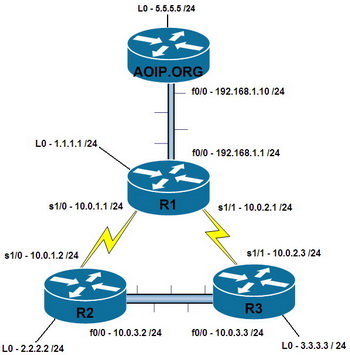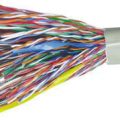Cisco routers use HDLC (High-Level Data Link Control protocol )as their default encapsulation protocol on serial lines. This works fine and there are no major problems with running HDLC however it lacks the troubleshooting commands that PPP (Point-to-Point Protocol) provides us. I learnt the value of PPP about 10 years back when I was installing 2 routers at different locations 50km away from each other. I had plugged in the first router and configured it 100%, I then drove out to the second location and after plugging in the second router and configuring it, the line still did not come up. The bad news with running HDLC is that there were no commands I could use to see if any traffic was been passed between to the two locations, and there was no way for me to identify if the fault was my own, or if I should be calling the telephone company to have them fix the line.
Had I been running PPP as my authentication instead of HDLC, I could have used commands such as ‘debug ppp negotiation’ and ‘debug ppp authentication’ These would have showed me if any traffic was been passed between the two devices and would have proven if it was a configuration problem or a line issue.
In order to configure PPP, both router have to have ‘encapsulation ppp’ configured under the interface, and additionally you can then configure ‘ppp authentication type’ type is often set to chap (Challenge Handshake Authentication Protocol) which allows for hashing of the passwords rather than sending the password in clear text.
In the below live demo, I have demonstrated how to configure R1 and R2 Cisco routers to use PPP encapsulation. (below is the network diagram used for the Configuration and the Live demo)

The full configuration and explanation for the configuration is as follows:
AOIP.ORG# R2
(telnet into router R2 – I have already configured ip host for R2 so there was no need to type telnet 2.2.2.2)
R2> en
R2# conf t
R2(config)# username R1 password aoip
(for PPP to authenticate with the remote router, they need to exchange usernames and passwords. The username is the hostname of the remote router, and the passwords need to be configured the same on both sides)
R2(config)# interface s1/0
(enter the interface that we wish to configure PPP on)
R2(config-if)# encapsulation ppp
(enable PPP encapsulation, my session drops at this point since my telnet into R2 is via this interface, and since R1 has not been configured for PPP yet, the line has dropped. To break out of this telnet session I can press ‘<Ctrl>+<Shift>+6 then x’ This will take me back to AOIP.ORG#)
AOIP.ORG# R1
(telnet into R1 – I have already configured ip host for R1 so there was no need to type telnet 1.1.1.1)
R1> en
R1# ping 2.2.2.2
(this confirms my line has dropped and I cannot ping R2)
R1# conf t
R1(config#) username R2 password aoip
(As before with R2, the username is the hostname of the remote router, and the passwords have been configured the same on both sides)
R1(config)# interface s1/0
R1(config-if)# encapsulation ppp
R1(config-if)# exit
R1(config)# exit
R1# ping 2.2.2.2
(ping is now successful since our line is now configured on both sides for PPP)
R1# exit
(takes me back to AOIP.ORG)
AOIP.ORG# <enter>
(resumes my session with R2 that I had to break out of earlier)
R2(config-if)#
(connection to R2 resumes, proving the line is operational again)




